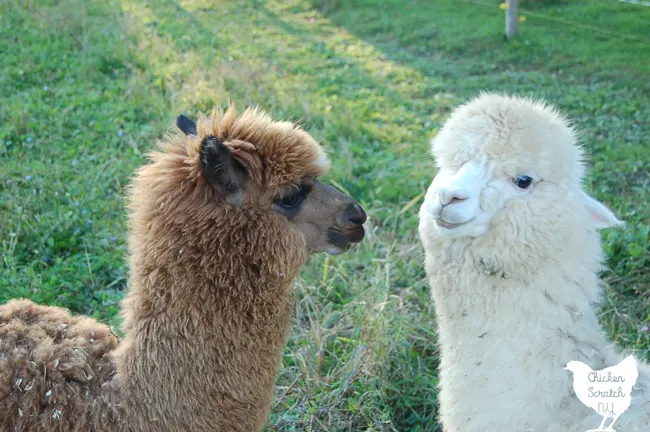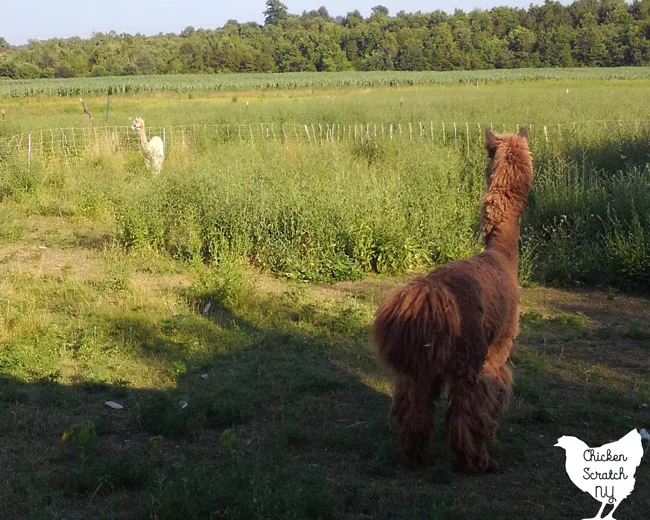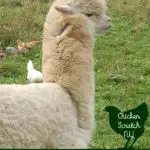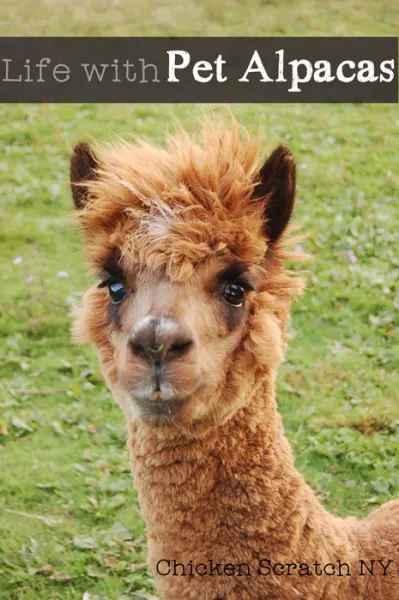The last three weeks have been rough. I’ve had the vet out 4 times to see George my male alpaca. He had a fever and nothing would touch it.

Three different antibiotics, Thiamine shots, red cell, tube feeding. It didn’t help and on Friday morning I found him dead in the barn. It wasn’t unexpected, he was going downhill and nothing we were doing was really helping. It was bittersweet to say the least.
Thursday night I told him this was his last shot, get better or die in your sleep. For the first time in his life he listened to me. I would have preferred to see him get better but in the end death is better than suffering.
I had to bury him in before I went to work, it’s been 95+ degrees and I wasn’t about to leave him out in that. Losing George reminded me of the most difficult lesson you can learn on a farm (or really in life).
Even if you do everything right and try your hardest, you can still fail.
I’ve been keeping a very close eye on the alpacas since the meningeal worm problems earlier this year. Even more so with the extreme heat and humidity we’ve been having since the end of June.

The minute I noticed George being more lethargic than normal I had the vet come out. He has a fever and the original diagnosis was listeriosis. A pretty common infection. He was put on daily shots of penicillin and we hoped for a quick turn around.
After a few days I noticed he wasn’t making any progress. So the vet came back, he still had a fever so we tried a different antibiotic. This was a long acting and I was told to give him another shot on Tuesday. Well Monday came and he still wasn’t right.
Back came the vet, they drew blood and started him on Oxytetracycline. He still had a fever, his red blood cell count was low and his white count was high. I started giving him red cell, a nasty smelling liquid full of iron that smells like blood and Flintstones vitamins, along with the antibiotic.
By Thursday it was clear that we were near the end. He was dehydrated and had gone blind (common side effect of thiamine deficiency) I had the vet come back for a last ditch effort of 4x a day Thiamine shots and a tube feeding.

I was heartbroken to lose George, it was physically and emotionally difficult to bury an animal I’d had so long. Fred and George came to live with me on September 11th 2011. They’ve been one constant in my life though all the changes.
Even harder than finding George was seeing Fred’s reaction. Alpacas are herd animals and he’s been her herd for 7 years. She was wandering from the barn to the pasture back and forth humming and looking for him.
Mary and I tried to spend more time out there with her but it wasn’t the same. Maybe we aren’t furry enough? I ended up posting a sad plea on Facebook for a gentle companion. Fred’s meningeal worm infection left her with some balance problems. She’s also 8+ years old so I wanted an alpaca of a similar age.
I ended up getting one message and on Sunday my boyfriend and pulled out the car seats, flipped the back seats down and put down a tarp and a throw rug.
After an hour of back country driving we arrived at a legit alpaca farm to pick up Okilani. Or Oki as the girls say. She’s from a farm with 48 alpacas and a lot less human interaction.

Did you know you can put an alpaca in a Nissan Rouge? I guess that’s the silver lining to the demise of by beloved 2005 Honda Accord that I replaced in May. No way to get an alpaca in that car.
Luckily it wasn’t that hard to get her in and she was very good for the entire ride home. After getting her out of the car and giving her an Ivermectrin shot it was time to introduce the two.
Oki was pretty nervous (with good reason) and she didn’t want anything to do with anyone. By the end of the night she and Fred were sniffing and walking around together.
Fred finally stopped humming and she seems pretty content. She’s still enjoying being hand fed by me and the girls. I’m hoping that with some time Oki will get less nervous around up and be happy here. A few days later she’s still not crazy about me, she’s terrified of Alfie but pretty cozy with Fred.

Mary is still sad, she’s been talking about all the animals we’ve lost including the turkey Gobbles “the big one that puts his feathers up” and telling a lot of people that “the white alpaca died”. We sat in bed and talked about George and how he wasn’t sick any more.

I buried George next to Henry and I told Mary she can still talk to him. She can also show him her new toys if she wants to. Kat doesn’t really know what’s going on but she’s happy to spend more time out with Fred.
You see a lot of life and a lot of death on a farm. In a way it’s good to be comfortable with death. It’s not like you can avoid it.
That brings us to the second life lesson, Life goes on.
Yesterday we added 9 new lives to the farm. This time they’re fuzzy and cheepy. My front porch is currently home to 18 guinea keets and 5 polish chicks. My former mother-in-law is taking the chicks and half the keets.
After the stress of Georges illness and death babies are nice reminder that life goes on and it’s worth the struggle.
Check out my livestock page for less depressing posts about our animals or start here:



